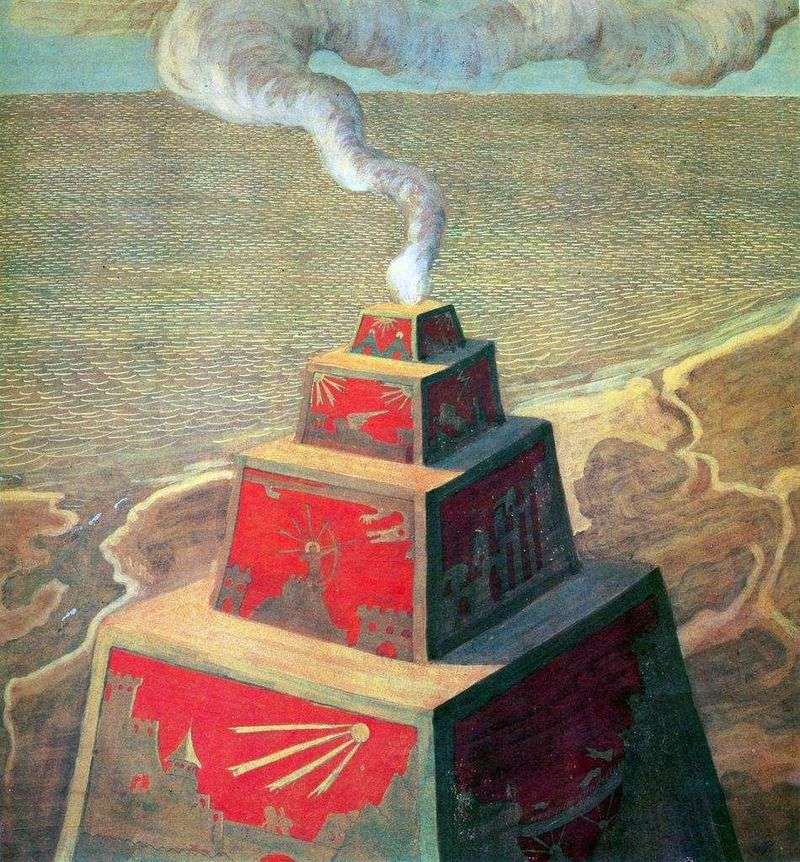
The origin of the architectural forms of Mikalojus Konstantinas Čiurlionis can equally be related to the East, and to various ancient civilizations – from Messopotamia and Egypt to Central America. But in the mind of the artist, his own, unlike architecture, was built, as if he had seen before him some long-disappeared Atlantis and tried to recreate it again and again. The altar depicted in this painting is one of the most majestic structures of the “Ciurlionis” architecture. And in contrast to many of its architectural compositions, where towers, fortresses, cities are buried in oblivion, this altar lives and “acts”: it smokes ritual smoke rising to the sky, which comes from the fire burning on the upper platform of the majestic altar. On the surface of it – a bright,
The viewer looks at the altar from a high point, revealing the earth’s surface – as it is seen from the airplane window, when the land turns into a detailed geographic map with winding ribbons of rivers, a distinct line of the sea shore and the far sea that fills the entire field of view, so that for the heavens there is only a narrow band. Having depicted the altar as “acting”, the artist allows the viewer to see some detail from the life of an imaginary and, apparently, very distant civilization. But the detail, not immediately noticeable, as is often the case with Ciurlionis, suddenly demands a rapprochement with our new time and with our civilization: the mist of the steamers is visible in the mouth of the river.
Thus, a certain mythical construction is connected here with the reality of the modern world, which is completely absent in the work of Ciurlionis. Therefore, in the context of his works, “The Altar” is a completely exceptional phenomenon. Anyone who is familiar with the works of Ciurlionis will easily see that on eight planes of the altar facing the viewer the artist has depicted as it were eight separate paintings of his own. This reception of the room of “paintings in the picture,” unusual in itself, is remarkable also because all the paintings – the frescoes of the altar – consist of images that have already been used by Ciurlionis earlier.
Here are represented: anthropomorphic towers from the Demon, a ladder with angels from the Angel, a horseman from the City, an archer from Prelude and Fugue, a figure on the edge of the cliff and a winged lion from the Zodiac, a dragon from The Journey of the Prince and “Sonatas of Spring”, flags from the “Sonata of Spring”, the sun on tops of peaked constructions from the “Sonata of the Pyramids”. The viewer’s imagination is given the right to imagine that the invisible planes of the great altar should have the same motives-the picturesque self-quotations of Ciurlionis.
This is an attempt to capture his figurative vocabulary, leaving his “creative encyclopedia” on the walls of the altar in the form of his frescoes is an attempt to leave himself. 1909, when the painting “The Altar” was painted, was the last creative year of Ciurlionis, a disease, and with it creative sterility waited for him, and he knew that the “black sun” was already covering him with his darkness. The earthly path ended. In 1907, he portrayed him in the triptych “My Way” as an ascent, rise and fall from the heights. Now he was ready to portray his path as what he had done in painting. And then the “altar” – this is the path that he passed in art. And if this is so, then it is he, the Artist, who lit a divine fire on the top of the altar he erected over the world.
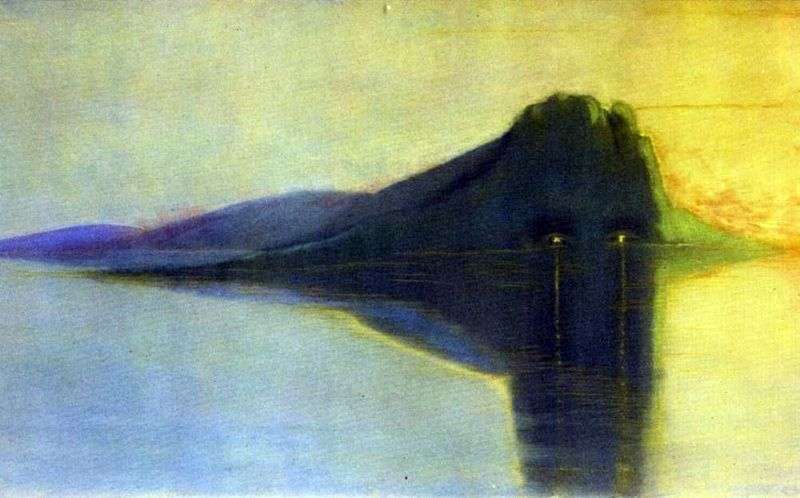 Peace by Mikalojus Ciurlionis
Peace by Mikalojus Ciurlionis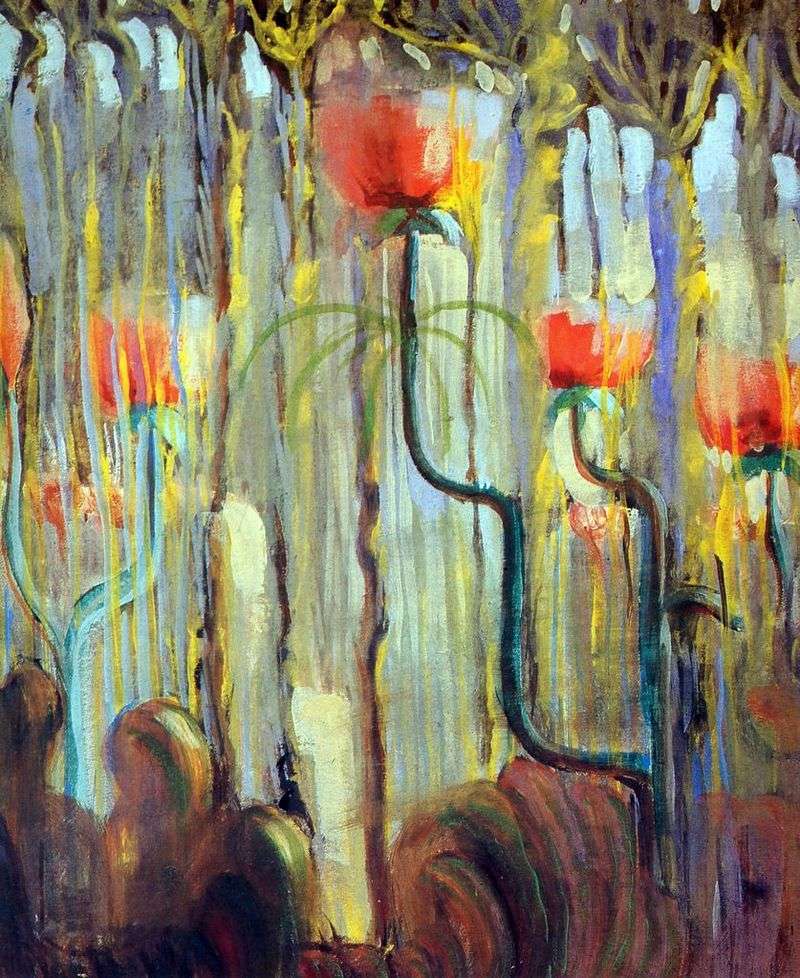 World creation. XI by Mikalojus Ciurlionis
World creation. XI by Mikalojus Ciurlionis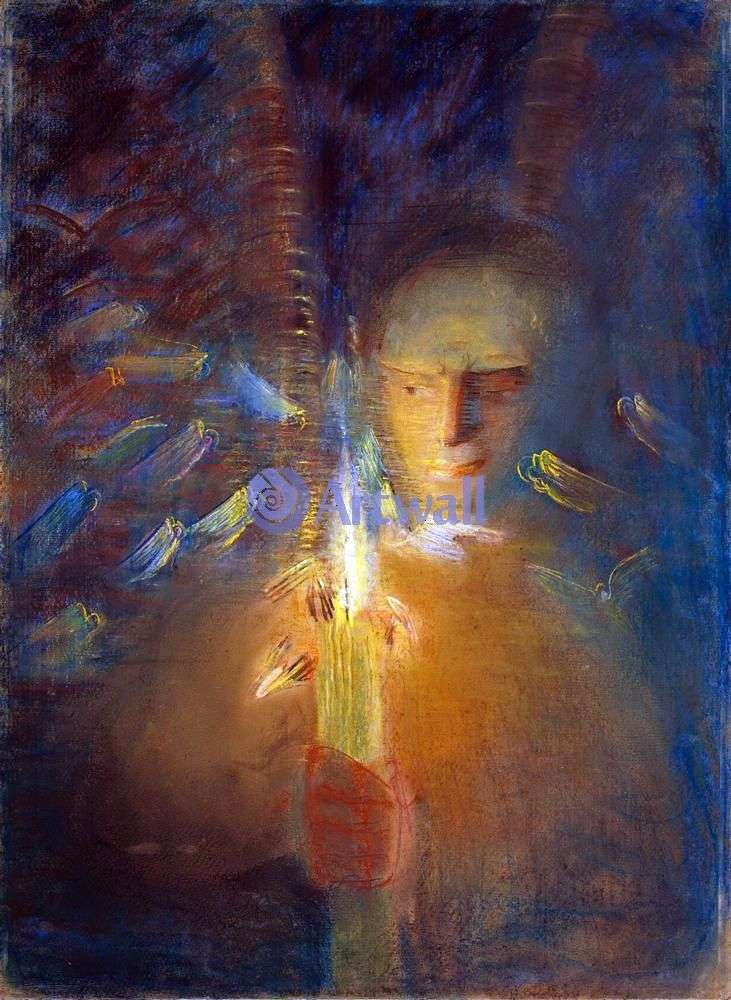 Truth by Mikalojus Ciurlionis
Truth by Mikalojus Ciurlionis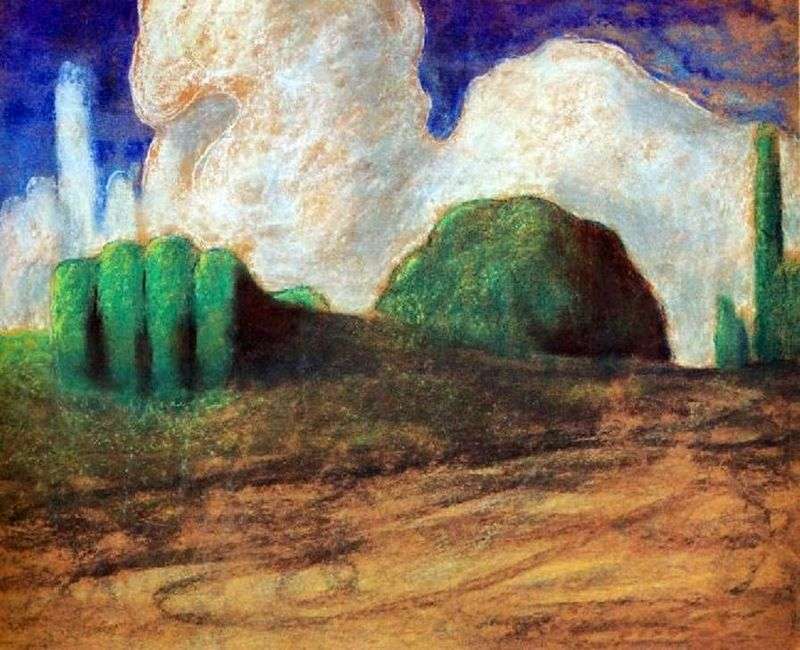 Day by Mikalojus Ciurlionis
Day by Mikalojus Ciurlionis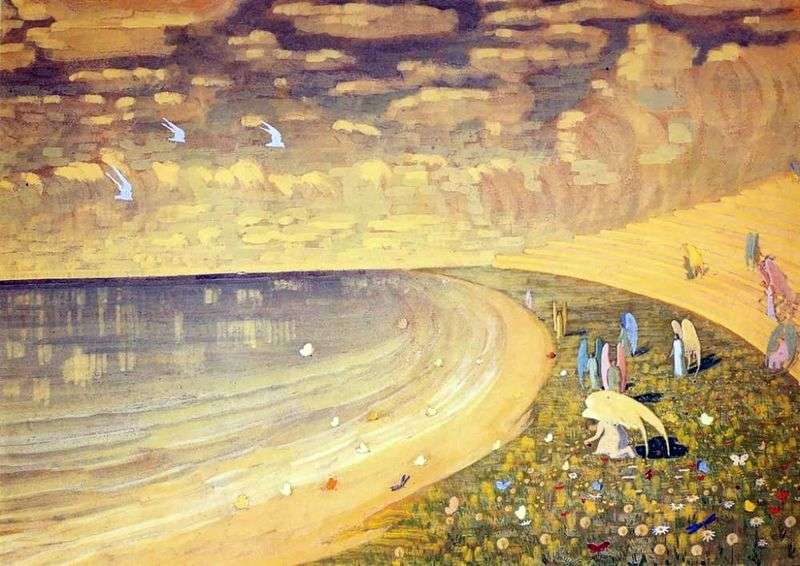 Paradise by Mikalojus Ciurlionis
Paradise by Mikalojus Ciurlionis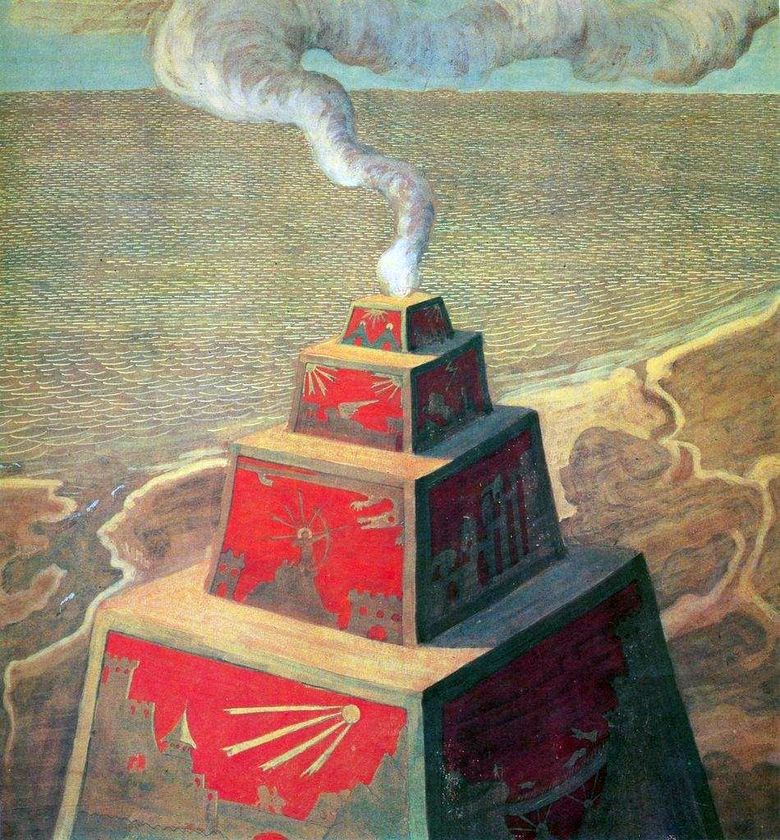 Crédence – Mikalojs Čiurlionis
Crédence – Mikalojs Čiurlionis The altar images by Giovanni Battista Tiepolo
The altar images by Giovanni Battista Tiepolo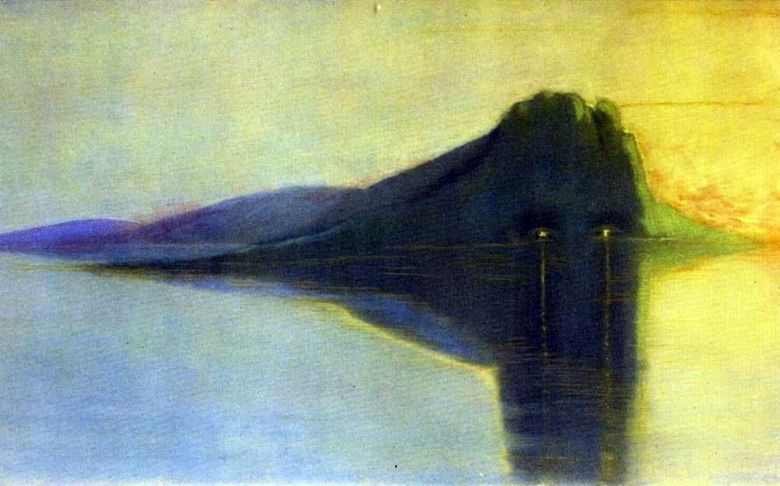 Paix – Mikalojs Čiurlionis
Paix – Mikalojs Čiurlionis